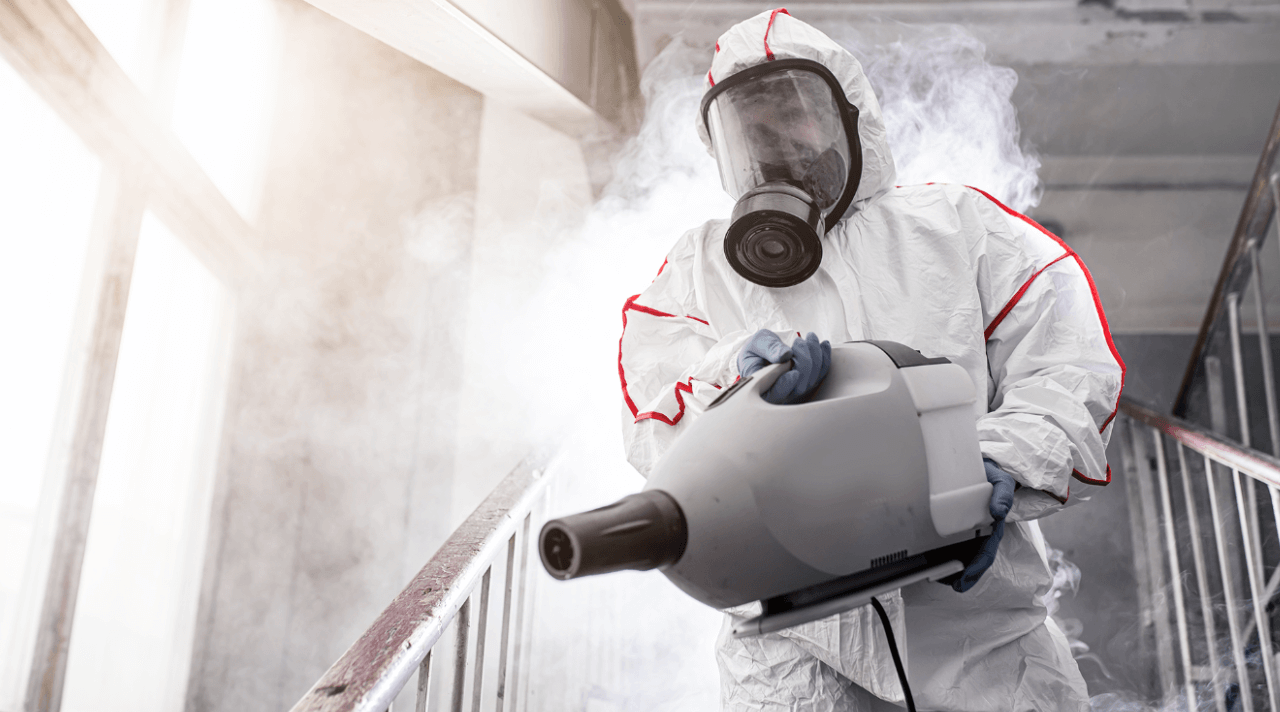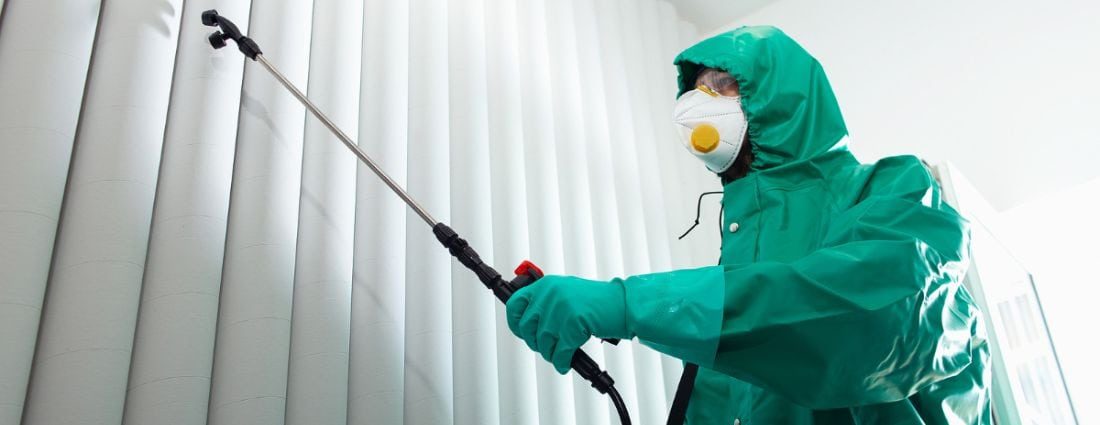Expert Biohazard Cleaning and Decontamination for Blood, Bodily Fluids, and Hazardous Materials
The possible health and wellness threats associated with direct exposure to biohazards underscore the important need for thorough handling and comprehensive cleaning. As we browse the elaborate landscape of biohazard cleaning, understanding the nuances of guidelines, compliance, and the customized tools at play becomes vital in ensuring a risk-free and complete purification procedure.
Health Risks of Biohazard Exposure
Exposure to biohazards presents substantial health and wellness dangers that can result in extreme effects for neighborhoods and individuals alike. Biohazards include a variety of organic materials, including blood, physical fluids, mold and mildew, germs, infections, and various other possibly infectious materials. When individuals enter call with these biohazards, whether via mishaps, incorrect handling, or environmental direct exposure, they face the risk of contracting major illnesses or illness.
Among the key wellness risks connected with biohazard direct exposure is the transmission of transmittable conditions. Bloodborne microorganisms such as HIV, hepatitis B and C, and various germs can be present in biohazardous materials, presenting a direct hazard to human health and wellness. Inhaling air-borne biohazards like mold spores or entering contact with infected surfaces can likewise lead to respiratory system problems, allergies, and various other unfavorable health results.
Furthermore, biohazard direct exposure can have lasting wellness implications, with some illness materializing years after the first contact (Blood Cleanup). Consequently, it is vital to focus on correct biohazard cleansing and decontamination to mitigate these health risks and guarantee the safety of individuals and areas

Specialized Training for Biohazard Clean-up
When it comes to dealing with biohazard clean-up effectively and safely, specialized training plays an essential duty in making sure appropriate purification treatments are adhered to. Biohazard clean-up requires particular expertise and skills to properly reduce dangers related to bloodborne pathogens, bodily liquids, and dangerous materials. Professionals learnt biohazard cleanup undertake rigorous guideline on just how to securely manage, remove, and throw away biohazardous materials to avoid contamination and direct exposure.
Specialized training for biohazard cleanup covers a series of crucial subjects, consisting of correct personal protective devices (PPE) usage, bloodborne microorganism recognition, purification strategies, and unsafe waste disposal procedures. People learnt biohazard clean-up are equipped with the essential experience to examine contamination levels, recognize prospective risks, and implement proper cleanup procedures in conformity with governing standards.
Continuous training and education and learning are paramount in the area of biohazard cleanup to stay upgraded on the current decontamination innovations, security procedures, and policies. By spending in specialized training, biohazard cleaning professionals can successfully reply to emergency situation cleaning scenarios and protect both public health and the environment.
Significance of Appropriate Purification Methods
Using appropriate purification methods is critical in biohazard clean-up to successfully remove dangerous materials and reduce health dangers. Reliable purification not just makes certain the removal of noticeable traces of blood, bodily fluids, and various other biohazards however likewise targets unseen virus that may present major health and Web Site wellness risks otherwise effectively gotten rid of. By adhering to stringent decontamination methods, educated specialists can substantially decrease the danger of exposure to about his dangerous microbes, infections, and microorganisms that might result in diseases or infections.
Appropriate purification techniques entail using specialized equipment and disinfectants that are particularly made to counteract biohazards efficiently. Extensive cleansing and disinfection of infected locations are vital to stop the spread of virus and guarantee a safe environment for passengers. Furthermore, the appropriate disposal of biohazardous waste adhering to purification treatments is essential in avoiding contamination of various other surface areas or individuals.

Devices and Tools for Safe Cleaning
The proper devices and devices play a crucial function in ensuring the effective and secure clean-up of biohazardous products. When taking care of blood, physical liquids, or dangerous products, biohazard cleansing experts count on specialized gear to reduce direct exposure threats and thoroughly decontaminate the afflicted location. Individual safety devices (PPE) such as handwear covers, goggles, coveralls, and masks are vital to safeguard versus straight contact with potentially contagious materials. Furthermore, biohazard cleansing packages containing anti-bacterials, absorptive materials, and biohazard bags are utilized to safely contain and get rid of of infected items. Blood Cleanup.
Advanced cleansing devices like hospital-grade disinfectants, HEPA-filtered vacuums, and fogging devices are utilized to disinfect surfaces and eliminate biohazards effectively. Specialized devices such as sharps containers and biohazard garbage disposal containers are utilized to safely handle sharp things and biohazardous waste materials. By using the ideal tools and tools, biohazard cleaning experts can make sure a comprehensive clean-up procedure that click here now focuses on safety and security and reduces health and wellness dangers for both employees and owners of the affected space.
Regulations and Compliance in Biohazard Cleaning
Correct adherence to regulations and compliance standards is critical in biohazard cleaning to make sure the security of both employees and the setting. Federal government firms such as OSHA (Occupational Safety And Security and Wellness Administration) and the EPA (Epa) have actually developed details standards for biohazard cleaning treatments to lessen wellness dangers and ecological contamination. These guidelines cover a variety of elements including the handling, transportation, and disposal of biohazardous products, along with the essential training and safety devices required for personnel associated with the cleaning procedure.
Biohazard cleansing companies must remain current with these guidelines to ensure that their operations meet the called for security requirements. Failure to adhere to these laws can lead to serious consequences, consisting of penalties, lawsuit, and jeopardizing the health and wellness of individuals and the setting. By complying with stringent laws and conformity steps, biohazard cleansing business can efficiently mitigate threats and guarantee a risk-free and comprehensive cleanup procedure for all parties involved.
Conclusion
To conclude, biohazard cleaning and decontamination call for specific training, correct strategies, and adherence to policies. Direct exposure to blood, bodily liquids, and dangerous products positions substantial health dangers, making it essential to make use of the best devices and devices for risk-free cleaning. By following stringent methods and guidelines, experts can properly reduce the threats related to biohazard exposure and make certain the safety of both themselves and others.
As we navigate the detailed landscape of biohazard cleanup, comprehending the subtleties of laws, compliance, and the specialized devices at play comes to be critical in guaranteeing a risk-free and thorough purification procedure. (Blood Cleanup)
When it comes to handling biohazard cleanup efficiently and safely, specialized training plays an essential duty in making certain proper decontamination procedures are followed.Using appropriate decontamination methods is vital in biohazard cleaning to properly remove unsafe materials and reduce health and wellness dangers. Furthermore, biohazard cleaning kits including disinfectants, absorbent products, and biohazard bags are made use of to securely have and get rid of of contaminated items.
Government firms such as OSHA (Occupational Safety And Security and Health And Wellness Administration) and the EPA (Environmental Protection Agency) have actually developed certain guidelines for biohazard cleanup treatments to lessen health and wellness risks and environmental contamination.